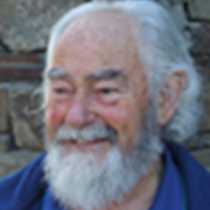Time and changing conditions have taken their toll on the salmon runs. The fish spawns and lays eggs in gravel beds in small streams entering the big river. The newly hatched young feed for a time in pools or ponds, then go to the open ocean for up to four years. As adults they return to complete their life cycle.
Here in the creek flowing from Multnomah Falls, we are able to observe Sockeye Salmon spawning much as they did when Lewis and Clark traveled this way. Nowhere are they as abundant as they were then, but as we watch them we feel the connection across the years.




